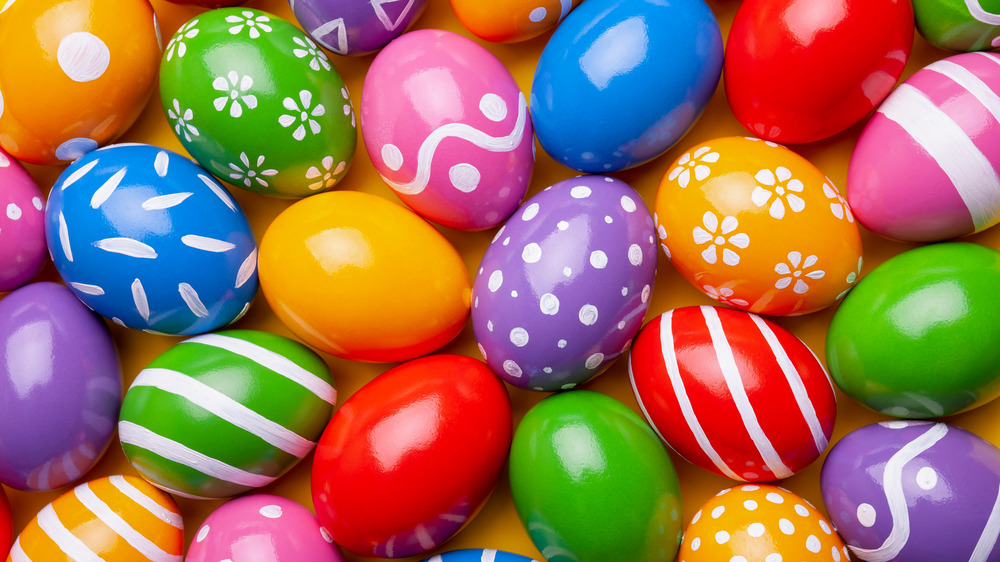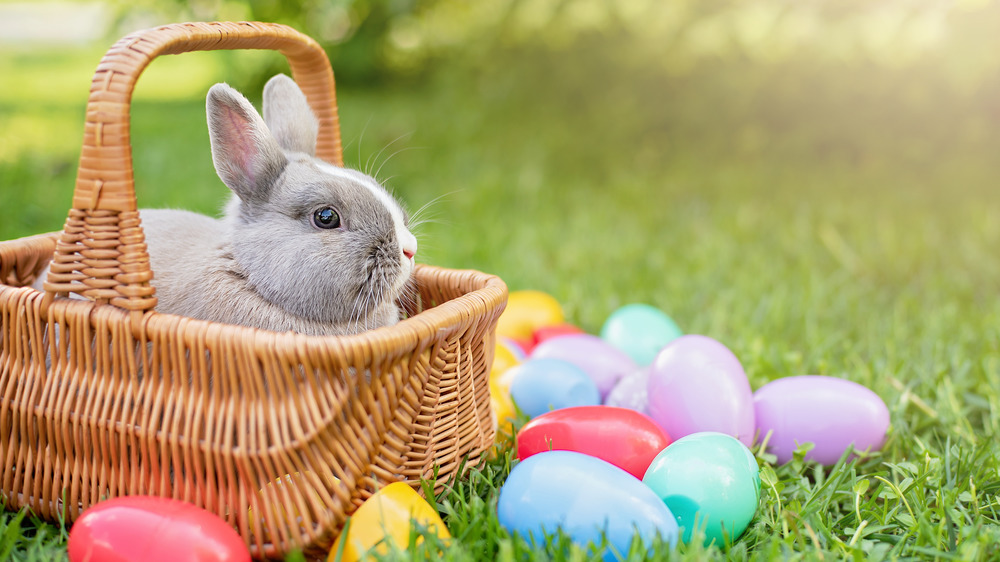The Pagan Origin Of Painted Easter Eggs
We have celebrated Easter much longer than you might imagine. The holiday name stems from the pre-Christian English goddess Eostre, who had a celebration in her honor at the beginning of spring (via The Conversation). Writings that describe this event trace back to a monk who lived between the end of the seventh century and beginning of the eighth century, according to the outlet.
This holiday origin mingled with the Germanic idea of Easter, which included an Easter bunny named Osterhase that served as a symbol of fertility and laid eggs in nests that children could collect (via History). When the creature came to the US via German settlers in the 1700s, it evolved in the American consciousness to transform into a holiday icon who helps hand out and hide candy and helped popularize the egg painting tradition.
The eggs that this original Easter bunny laid have a history as old as the rabbit they came from. Easter eggs potentially stem from a pagan myth surrounding the goddess Eostre, who revived a dying bird and turned it into the iconic egg-laying rabbit, who in turn gifted Eostre with colorful eggs (via Food Network Canada). If these events all sound related, don't be shocked. According to History, the ancient pagan traditions of Easter, including Easter eggs, may have moved from Germany, where pagans celebrated the holiday called Eostarum, to England. Once Christianity entered the picture, even more traditions started to blend together.
Pagan Easter eggs' conversion to Christianity
The earliest accounts of Christians painting eggs dates back to Mesopotamia, as some of the first Christians dyed eggs red to symbolize the blood of Christ (via Food Network). King Edward I took this idea and potentially popularized the Christian practice of dying eggs in Europe when he ordered 450 painted and decorated eggs in the 1200s. Some also said that eggs once were considered a food Christians had to give up for Lent, and instead painted them while they fasted, only eating them on Easter day (via History). However these iconic Easter symbols evolved, they can trace a clear ancestry back to strong pagan roots and the goddess Eostre.
If you love decorating eggs and want to celebrate the spirit of the holidays, don't forget about the long history of the Easter egg. With a bit of practice, your painted eggs might even resemble the very first eggs the Easter bunny laid millennia ago.

